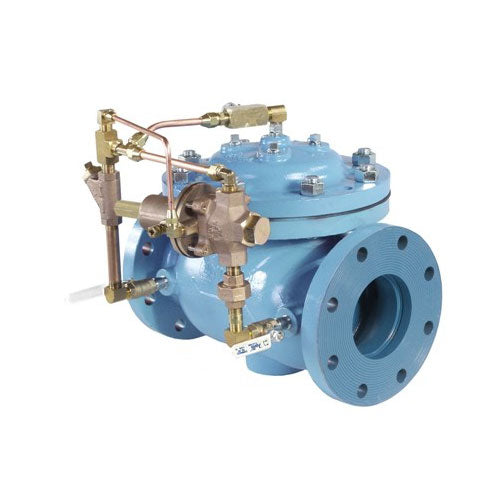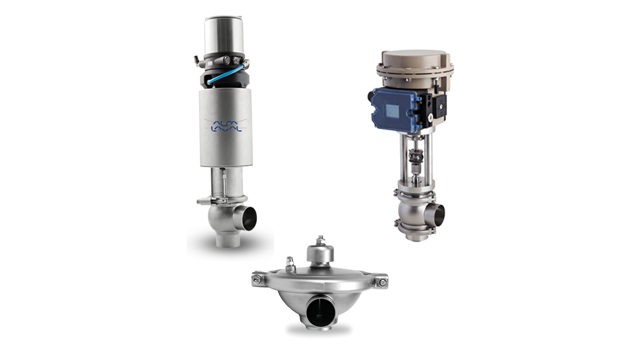Discovering the Capability of Modern Control Valves in Industrial Applications
Discovering the Capability of Modern Control Valves in Industrial Applications
Blog Article

Maximize Energy Cost Savings and Comfort With Advanced Building Automation Controls
In the realm of modern-day architecture and center administration, the integration of advanced building automation manages stands as a crucial improvement. The convergence of innovation and sustainability has birthed a new period where energy effectiveness, comfort optimization, and functional streamlining are no more attainable facts however far-off aspirations. By utilizing the power of automation, buildings can adjust, respond, and advance in methods that were as soon as inconceivable. The potential for significant power cost savings and enhanced convenience is not just an opportunity but a pledge waiting to be fulfilled. This standard shift in building administration holds the vital to opening a globe where environmental conscientiousness and resident wellness sympathetically exist side-by-side within the walls of our frameworks.
Energy Performance Benefits
Power efficiency benefits can substantially lower energy usage and functional expenses in buildings. Energy-efficient systems, such as sophisticated structure automation controls, can maximize the use of sources like air conditioning, lighting, and home heating, leading to lower power expenses over time.
Moreover, enhanced energy effectiveness can extend the life-span of building devices and systems. By running much more efficiently, HVAC systems, lighting fixture, and various other structure elements experience less wear and tear, resulting in reduced upkeep and replacement costs. In addition, energy-efficient structures often command higher residential or commercial property worths and rental rates, supplying long-lasting monetary advantages to proprietors.
Moreover, energy effectiveness can improve resident convenience and performance. Correctly managed indoor atmospheres with optimum illumination and thermal conditions create an even more pleasurable and favorable office, causing boosted worker contentment and efficiency. Overall, the power effectiveness advantages associated with sophisticated structure automation controls are complex, including price savings, ecological stewardship, and occupant wellness.
Improved Convenience Control
Enhancing comfort control in building environments calls for a sophisticated assimilation of innovative automation systems for optimum owner wellness. By using sophisticated building automation controls, centers can customize the indoor environment to satisfy the particular needs and choices of passengers. control valves.
By integrating these innovative controls, buildings can not just boost convenience however also improve power performance by optimizing system operations based on actual tenancy and use patterns. Ultimately, focusing on owner comfort through advanced automation systems leads to an extra pleasurable and much healthier interior setting.
Functional Performance Improvements

Furthermore, the implementation of real-time tracking and analytics tools enables structure operators to identify power ineffectiveness and functional anomalies without delay. By constantly keeping an eye on power usage patterns and system performance metrics, adjustments can be made in real-time to optimize power intake and guarantee peak operational efficiency. control valves. Furthermore, incorporating demand action approaches into building automation controls can further boost operational performance by dynamically changing energy usage based on grid conditions and prices signals
Indoor Environment Optimization
Reliable indoor environment optimization is a basic element of structure automation controls, guaranteeing passengers' comfort and well-being while taking full advantage of energy Visit This Link financial savings. By utilizing advanced sensing units and controls, constructing automation systems can continuously change and keep track of temperature, humidity levels, air quality, and ventilation to create an ideal indoor atmosphere. Preserving website link comfy and constant problems not only boosts occupant satisfaction however also boosts efficiency and overall health.
Indoor environment optimization also plays a vital role in power performance. By fine-tuning air conditioning, ventilation, and home heating systems based upon real-time data and tenancy patterns, constructing automation controls can significantly minimize energy intake - control valves. Applying strategies such as demand-controlled ventilation and thermal zoning can help reduce power waste while ensuring that each area of the building obtains the needed conditioning.

Sustainable Environment Development
Structure automation controls not just optimize indoor environment problems for energy effectiveness and passenger convenience however likewise lay the foundation for creating a lasting atmosphere through critical monitoring of sources and systems. By integrating sophisticated building automation modern technologies, such as sensing units, actuators, and intelligent software, centers can keep an eye on and change energy usage in real-time to lessen waste and decrease their carbon footprint. These systems make it possible for anticipating upkeep, determining prospective concerns prior to they intensify and enhancing tools performance to improve longevity and performance.
In addition, sustainable atmosphere development expands beyond energy management to encompass water a fantastic read preservation, waste reduction, and interior air high quality renovation. Structure automation controls can control water use, discover leakages, and guarantee proper garbage disposal practices, adding to total sustainability initiatives. In addition, by monitoring and controlling air flow and purification systems, these technologies boost passenger health and wellness and performance while decreasing energy intake related to HVAC procedures.
Conclusion
In final thought, advanced building automation manages deal substantial benefits in terms of power financial savings, convenience control, functional efficiency, indoor environment optimization, and developing a lasting atmosphere. By applying these controls, structures can attain optimum efficiency while lowering energy usage and improving owner convenience. It appears that using innovative automation modern technology is important in boosting structure performance and producing a much more lasting future.
Energy performance benefits can substantially lower energy usage and functional expenses in buildings. On the whole, the energy effectiveness benefits connected with sophisticated structure automation controls are multifaceted, encompassing price savings, environmental stewardship, and owner health.
Additionally, integrating demand response methods right into structure automation controls can better improve operational effectiveness by dynamically readjusting power use based on grid problems and prices signals.
Building automation controls not only maximize interior environment conditions for power performance and resident comfort but also lay the structure for creating a sustainable setting via calculated administration of resources and systems.In verdict, progressed building automation controls deal significant advantages in terms of energy savings, comfort control, operational effectiveness, interior environment optimization, and creating a lasting setting.
Report this page